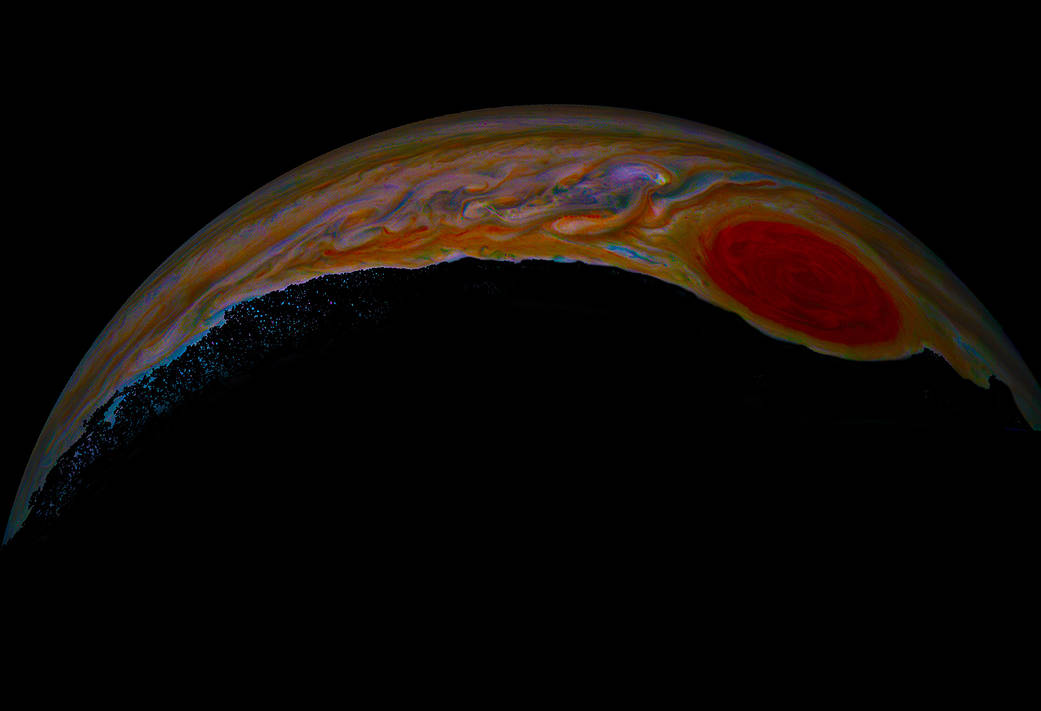Jupiter’s already vibrant colors become especially striking in this artistic interpretation of an image from NASA’s Juno mission that shows the planet’s famous Great Red Spot. Citizen scientist Mary J. Murphy processed an image from the spacecraft’s JunoCam instrument, increasing the color saturation to create a piece Murphy calls “The Rose.”
The Great Red Spot is a storm in Jupiter’s southern hemisphere with crimson-colored clouds that spin counterclockwise at wind speeds that exceed those in any storm on Earth. The Great Red Spot has slowly changed over the years, and is currently about 1.3 times as wide as our planet. Data returned by the Juno mission helped scientists determine that the storm’s roots extend at least 200 miles (320 kilometers) into Jupiter’s atmosphere. For comparison, a typical tropical cyclone on Earth only extends about 9 miles (15 kilometers) from the top of the storm to the bottom.
The original JunoCam image was taken on July 20, 2019, at 9:37 p.m. PDT (July 21, 2019, at 12:37 a.m. EDT) as the Juno spacecraft performed its 21st close flyby of Jupiter. At the time the image was taken, the spacecraft was about 27,000 miles (43,000 kilometers) from the planet’s cloud tops at a latitude of about 47 degrees South.
JunoCam’s raw images are available for the public to peruse and process into image products at https://missionjuno.swri.edu/junocam/processing.
More information about Juno is at https://www.nasa.gov/juno and https://missionjuno.swri.edu.
Image credit: Image data: NASA/JPL-Caltech/SwRI/MSSS
Image processing by Mary J. Murphy


























